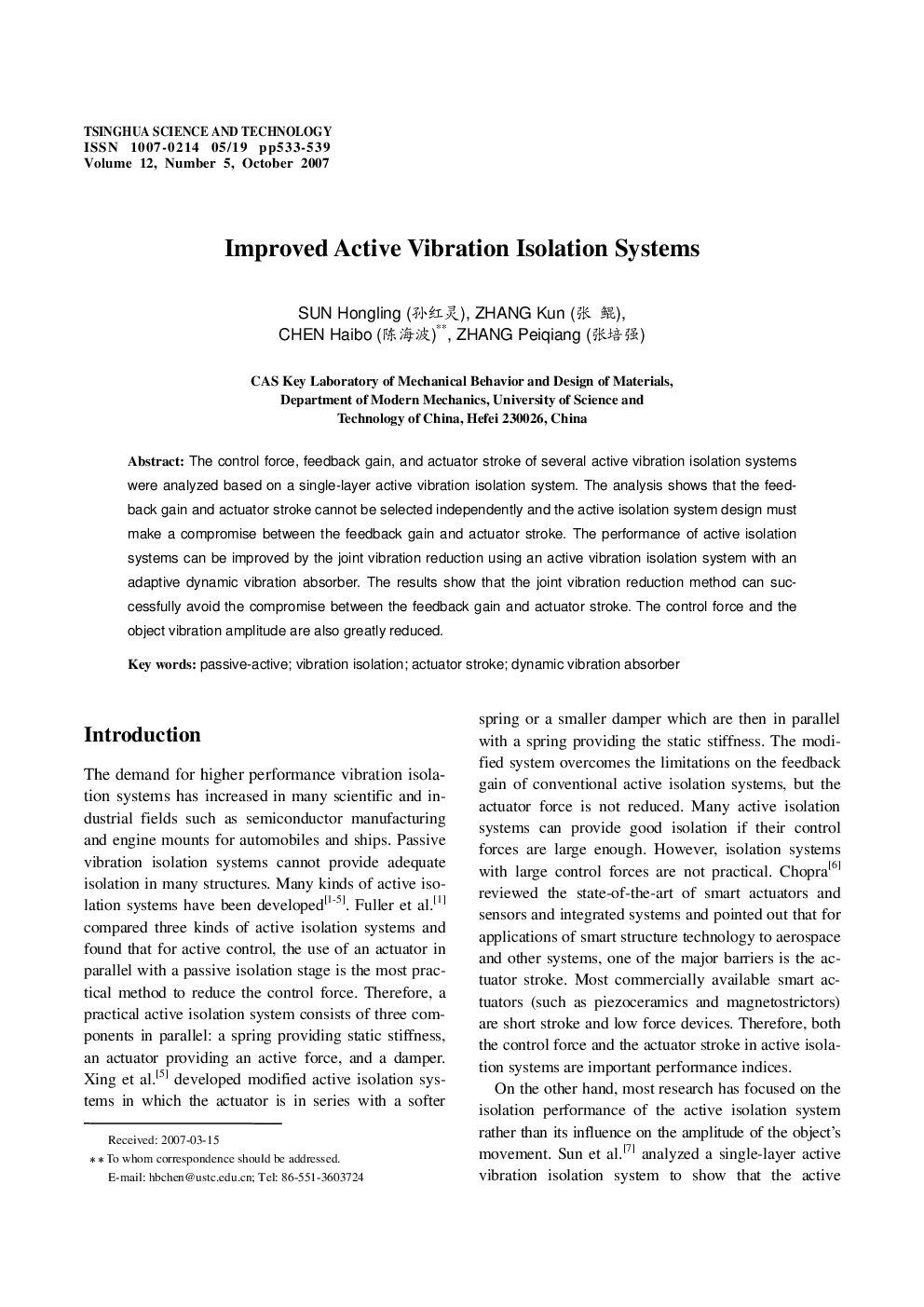| Article ID | Journal | Published Year | Pages | File Type |
|---|---|---|---|---|
| 865882 | Tsinghua Science & Technology | 2007 | 7 Pages |
Abstract
The control force, feedback gain, and actuator stroke of several active vibration isolation systems were analyzed based on a single-layer active vibration isolation system. The analysis shows that the feedback gain and actuator stroke cannot be selected independently and the active isolation system design must make a compromise between the feedback gain and actuator stroke. The performance of active isolation systems can be improved by the joint vibration reduction using an active vibration isolation system with an adaptive dynamic vibration absorber. The results show that the joint vibration reduction method can successfully avoid the compromise between the feedback gain and actuator stroke. The control force and the object vibration amplitude are also greatly reduced.
Related Topics
Physical Sciences and Engineering
Engineering
Engineering (General)
Authors
Sun (å红çµ), Zhang (å¼ é²²), Chen (éæµ·æ³¢), Zhang (å¼ å¹å¼º),
